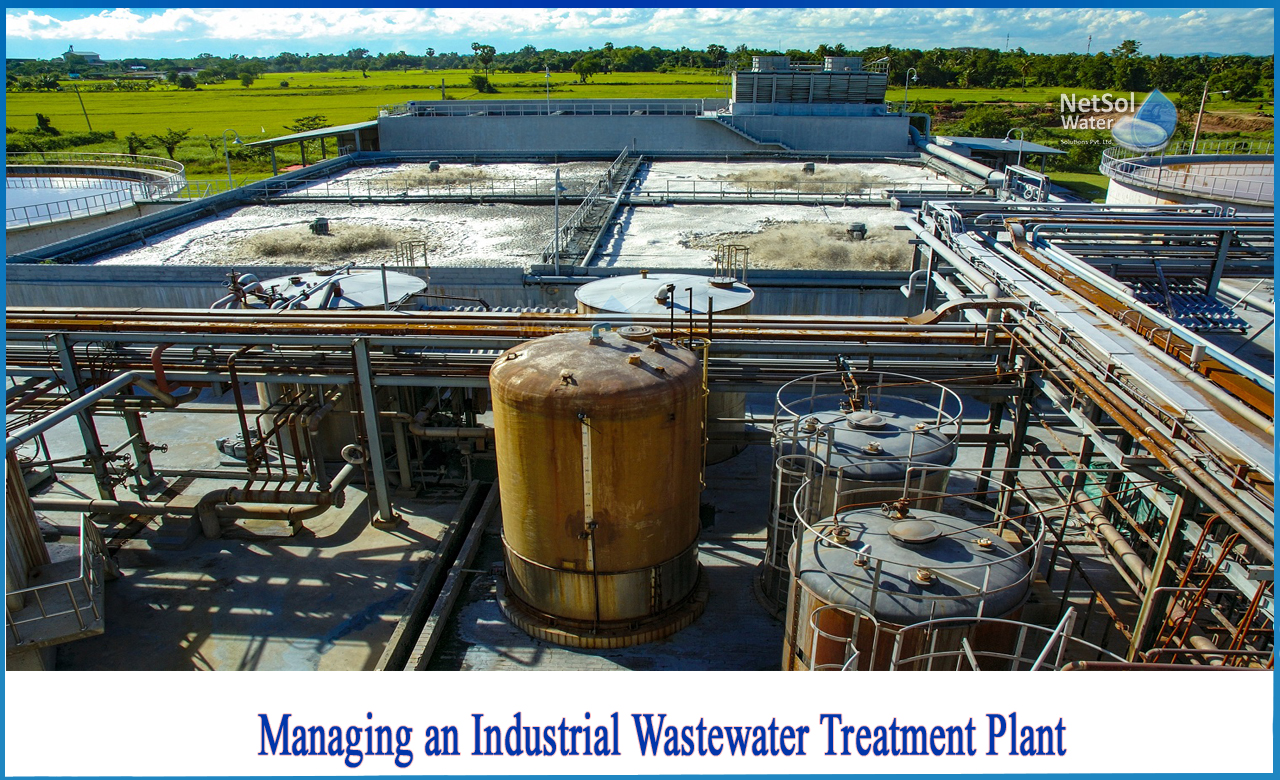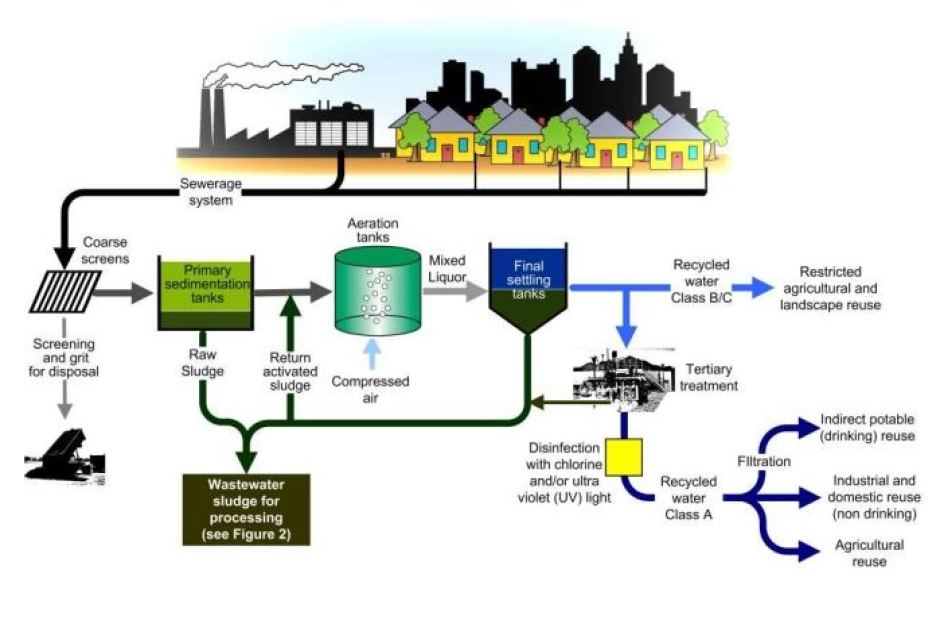Industrial Waste Water Treatment-- Sustainable Solutions for Industrial Water Management
Key Techniques in Industrial Waste Water Therapy Processes
The therapy of industrial wastewater is a vital facet of ecological management, involving a range of techniques made to alleviate the impact of contaminants. From the fundamental physical techniques that divide solids to the sophisticated chemical and organic processes that target details contaminants, each method plays a vital duty in achieving water quality standards. Improvements in technologies such as membrane layer purification and advanced oxidation procedures use innovative options for boosting treatment efficacy. Comprehending just how these methods interconnect and their ramifications for sustainability elevates important concerns regarding the future of wastewater monitoring in sector.
Physical Treatment Methods
How efficiently can physical treatment methods deal with the complexities of industrial wastewater? Physical treatment approaches play a crucial duty in the initial phases of wastewater monitoring, focusing primarily on the elimination of solids and big particulates. Methods such as filtration, sedimentation, and flotation protection are crucial for reducing the focus of put on hold solids, thus enhancing the efficiency of succeeding therapy processes.
Sedimentation involves the gravitational settling of solids, enabling the splitting up of much heavier materials from the wastewater. This approach is especially effective in making clear water before chemical or organic treatments. Filtration, on the various other hand, uses various media to record particulate issue, making certain that smaller contaminants are gotten rid of. This technique can be customized to fit various kinds of industrial effluents, creating clearer effluent streams.
In addition, flotation techniques, which utilize air bubbles to raise put on hold solids to the surface for elimination, are effective in dealing with wastewater with high focus of fats, oils, and greases. In general, physical therapy techniques act as a critical primary step in the detailed management of industrial wastewater, making certain that the load on subsequent therapy phases is reduced and boosting overall treatment efficiency.
Chemical Therapy Techniques
While physical treatment approaches lay the groundwork for reliable wastewater administration, chemical treatment strategies are vital for dealing with the extra complicated contaminants commonly found in commercial effluents. These methods make use of various chemical representatives to precipitate, counteract, or oxidize hazardous materials, guaranteeing an extra extensive elimination of pollutants.
One typical approach is coagulation and flocculation, where chemical coagulants such as aluminum sulfate or ferric chloride are contributed to promote the aggregation of put on hold fragments. This process boosts solid-liquid separation, minimizing turbidity and boosting water quality. In addition, neutralization procedures are employed to change the pH of wastewater, making use of bases or acids to neutralize acidic or alkaline streams, specifically.
Oxidation-reduction responses play a crucial function in degrading natural impurities and pathogens. Chemical oxidants like hydrogen, chlorine, or ozone peroxide are utilized to break down complicated organic substances, making them much less unsafe or more naturally degradable. Moreover, progressed oxidation procedures (AOPs) incorporate numerous oxidation strategies to boost pollutant removal effectiveness.
Organic Treatment Processes
The efficiency of wastewater treatment is considerably improved by biological therapy procedures, which harness the all-natural metabolic activities of bacteria to break down raw material and remove pollutants. Industrial Waste Water Treatment. These processes primarily entail anaerobic and cardio food digestion, each tailored for particular types of wastewater
Aerobic therapy procedures use oxygen to support microbial growth, advertising the malfunction of organic pollutants right into co2 and water. Typical methods consist of triggered sludge systems, where aeration tanks promote the blending of wastewater with microorganisms, and trickling filters, which urge biofilm advancement on media surfaces.
Alternatively, anaerobic therapy processes take place in the lack of oxygen, utilizing anaerobic microorganisms to disintegrate raw material, leading to biogas production, a renewable resource resource. Anaerobic digesters are commonly utilized in commercial settings for this objective, successfully decreasing the quantity of sludge while producing valuable biogas.
The choice of a biological therapy method depends on wastewater characteristics, therapy objectives, and regulatory requirements. The combination of organic processes in wastewater therapy not only boosts contaminant elimination efficiency yet also advertises sustainability by minimizing chemical usage and sustaining resource healing.
Advanced Oxidation Processes

Typical AOP strategies include Fenton's reagent, ozonation, and photocatalysis. Fenton's reagent, a mix of hydrogen peroxide and ferrous iron, militarizes the formation of hydroxyl radicals, making it reliable for dealing with wastewater including phenolic substances and various other stubborn substances.
AOPs use numerous benefits, including lowered sludge production and the capability to deal with wastewater YOURURL.com with high focus of natural pollutants. The execution of AOPs requires careful consideration of operational parameters and cost-effectiveness, guaranteeing that these advanced techniques are appropriately integrated into existing wastewater treatment systems.
Membrane Purification Technologies

Microfiltration works for getting rid of suspended germs and solids, while ultrafiltration targets smaller sized natural particles and infections. Nanofiltration links the gap between ultrafiltration and reverse osmosis, efficiently eliminating natural substances and divalent ions. Reverse osmosis provides the highest level of purification, utilized mostly for desalination and getting rid of mono-valent ions.
Membrane layer modern technologies offer numerous advantages, including reduced power intake contrasted to typical therapy approaches, modular design for webpage scalability, and the potential for water recovery and reuse. Difficulties such as membrane fouling and the need for normal upkeep need to be dealt with to guarantee system efficacy. Overall, membrane layer purification innovations represent an important component of modern industrial wastewater treatment strategies, advertising sustainability and resource conservation in water monitoring.
Final Thought
Finally, industrial wastewater therapy utilizes a diverse selection of methods, including physical, chemical, organic, and advanced approaches. Each technique plays an important role in properly attending to various impurities, improving water quality, and advertising resource sustainability. The assimilation of these methods fosters a detailed treatment approach, guaranteeing that commercial effluents satisfy governing requirements while minimizing ecological impact. Proceeded advancements in these methods will additionally improve the effectiveness and efficiency of wastewater treatment procedures in industrial setups.
The therapy of industrial wastewater is a vital element of ecological management, entailing an array of strategies created to mitigate the impact of impurities.Exactly how efficiently can physical therapy methods deal with the complexities of commercial wastewater?Advanced oxidation processes (AOPs) represent an innovative approach in industrial wastewater therapy, designed to effectively weaken organic pollutants that are commonly resistant to conventional treatment techniques (Industrial Waste Water Treatment).In conclusion, industrial wastewater therapy employs a diverse variety of techniques, consisting of physical, chemical, organic, and progressed methods. Proceeded developments in these methods will even more enhance the efficiency and effectiveness of wastewater treatment processes in industrial settings